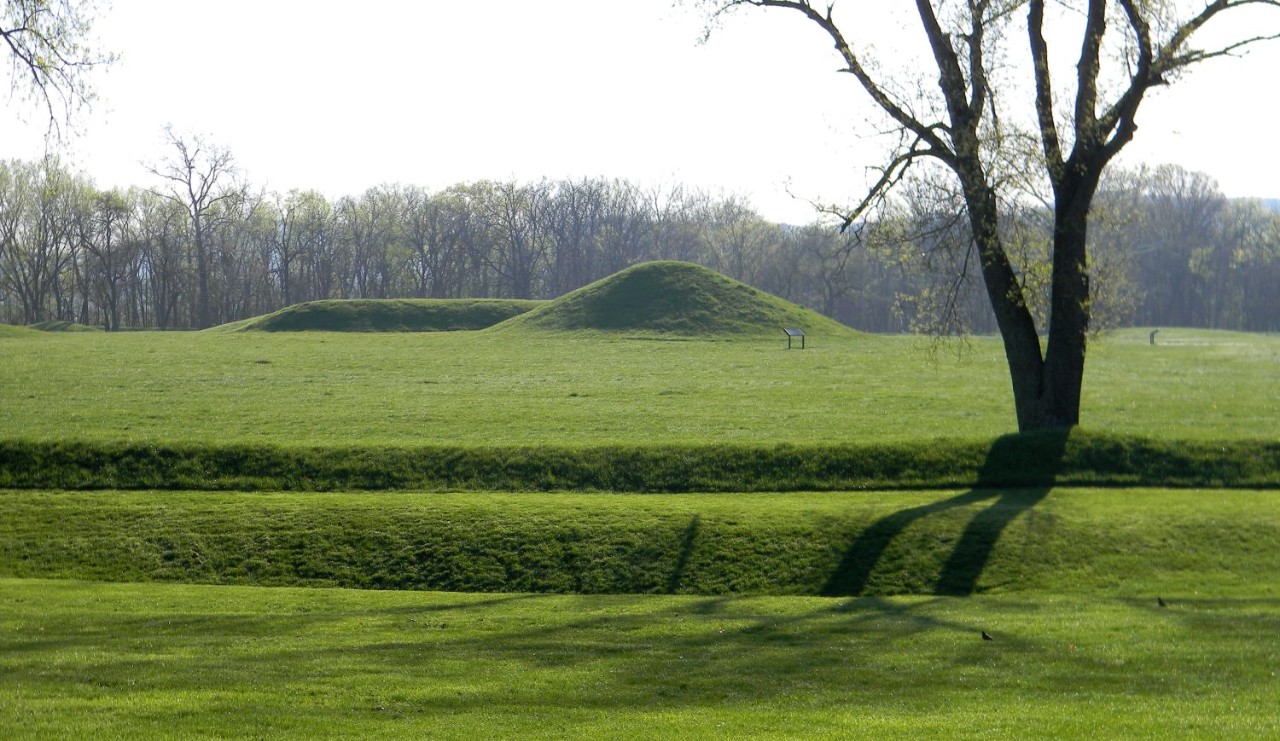University of Cincinnati professor emeritus John Hancock has seen his life's work come to fruition, with the inscription of Ohio's Hopewell Ceremonial Earthworks as a UNESCO World Heritage site.

Mound City, Chillicothe, Ohio at sunrise. Photo/John Hancock
The designation pertains to eight sites in central and southern Ohio where vast earthen structures were built by American Indigenous people nearly 2,000 years ago. These earthworks - huge geometric and hilltop enclosures, lined with gateways and ponds - served as central ceremonial sites for festivals and religious gatherings, likely based around observations of moonrises.
In an article in National Geographic, one site alone is described as being "capable of holding four Roman Coliseums."
"People have no idea about the brilliance of this culture and the ancient architectural monuments that are around here," Hancock says of first learning about the earthworks himself in the late 1990s while teaching architectural history and theory at UC's College of Design, Architecture, Art, and Planning. (DAAP).
Calling it a "moment of discovery," Hancock went on to secure federal, state and UC grants to research the earthworks and their builders, to develop methods for making them more comprehensible to the public and to create an online guide to all of Ohio's earthworks.
From there, for nearly two decades, Hancock helped lead the team of archaeologists, historians and Native American scholars, including staff at the National Park Service and Ohio History Connection, all of whom worked tirelessly to make the case for the earthworks to be recognized on par with other World Heritage sites such as the Great Wall of China and Stonehenge.
One difficulty, as Hancock describes in a Slate magazine feature, was that the sites had been damaged over many decades by settlement, farming and industry.
"If a Greek temple is in ruins, you can see it, and it's still pretty interesting," Hancock told the magazine. However, many of the Hopewell sites in the region, he stated, were flat, covered in forest or simply too large in scale to be comprehensible. "We had to come up with a way of describing the integrity of the sites through a combination of the architecture you can see and the archaeological evidence you can't see."
Now that the Ohio earthworks are designated as World Heritage sites, the team is working to update and upgrade visitor experience materials, interpretive signage and online resources for the expected increase in regional tourism.
Featured image at top of Mound City provided by Hancock.






